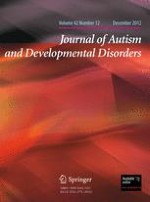01-12-2012 | Original Paper
Sex Differences in Children with Autism Spectrum Disorder Identified Within a High-Risk Infant Cohort
Gepubliceerd in: Journal of Autism and Developmental Disorders | Uitgave 12/2012
Log in om toegang te krijgenAbstract
Sex differences were examined in 3-year-olds with autism spectrum disorders (ASD) ascertained from a high-risk cohort, and high- and low-risk comparison groups. Participants included 319 high-risk siblings and 129 low-risk controls. Eighty-five siblings were diagnosed with ASD, including 57 of 176 boys (32.4 %) and 28 of 143 girls (19.6 %), implying a relative odds of ASD of 1.65 in boys versus girls. There were modest sex differences on cognitive and adaptive skills and ASD symptom severity at age 3, but differences between boys and girls with ASD mirrored those in the non-ASD groups. The lower than expected male-to-female ratio, and the relatively high cognitive level among diagnosed children, suggest that we have identified an unanticipated number of higher-functioning girls with ASD.
